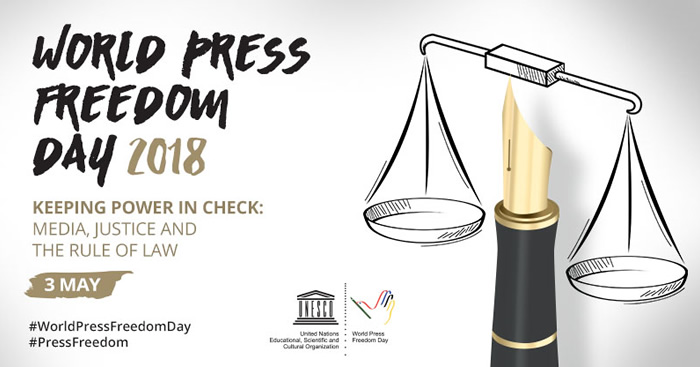August 28, 2017
UN Secretary-General Meets Mayor of New York City
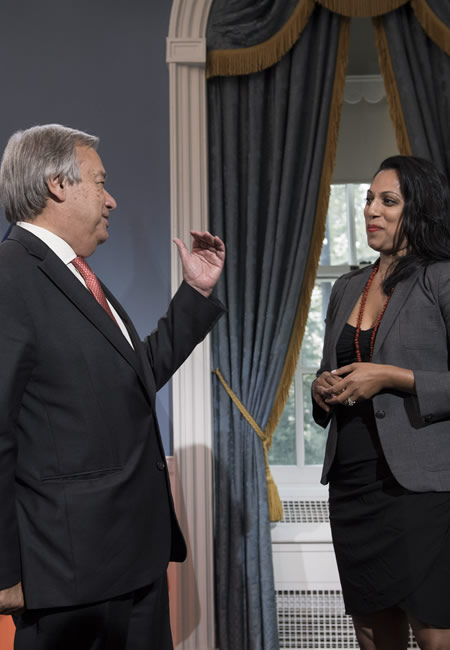
Photo: UN Secretary-General António Guterres (left) speaks with Penny Abeywardena (right), New York City’s Commissioner for International Affairs, prior to a meeting with Mayor Bill de Blasio. 24 August 2017. United Nations, New York. UN Photo/Mark Garten.
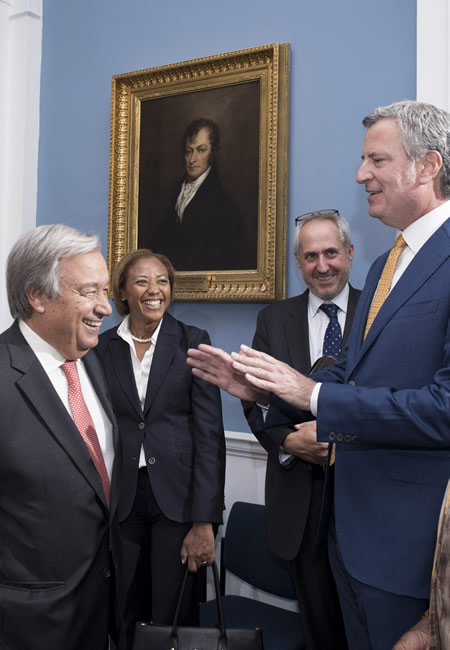
Photo: UN Secretary-General António Guterres (left) meets with New York City Mayor, Bill de Blasio (right). 24 August 2017. United Nations, New York. UN Photo/Mark Garten.
|GlobalGiants.Com|







Edited & Posted by Editor | 11:48 AM | Link to this Post
August 21, 2017
President of India presents President’s Colours to Ladakh Scouts Battalions
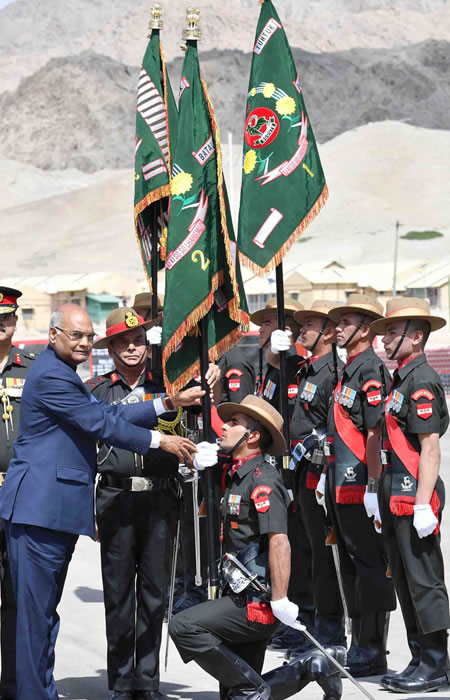
Photo: The President of India, Ram Nath Kovind, presents the President’s Colours to Ladakh Scouts Battalions in Leh on August 21, 2017. Image provided by the Press Information Bureau, Government of India.
|GlobalGiants.Com|







Edited & Posted by Editor | 11:12 AM | Link to this Post
August 17, 2017
Navika Sagar Parikrama - Circumnavigating The Globe on an Indian-Built Sail Boat INSV Tarini by Women Naval Officers
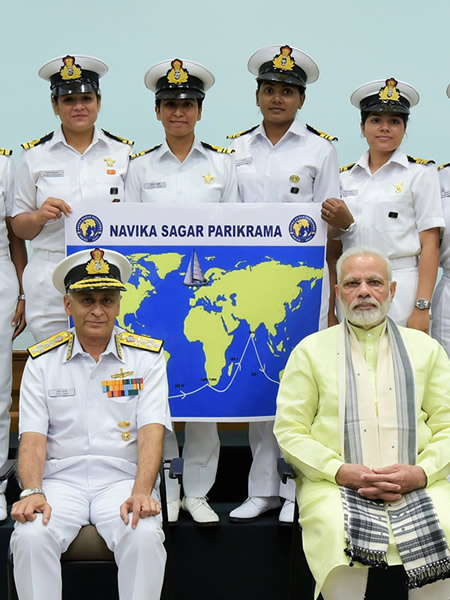
Photo: India Prime Minister Narendra Modi with the women officers of the Indian Navy who are due to circumnavigate the globe on the sailing vessel INSV Tarini, in New Delhi on August 16, 2017. The Chief of Naval Staff, Admiral Sunil Lanba is also seen. Image provided by the Press Information Bureau, Government of India.
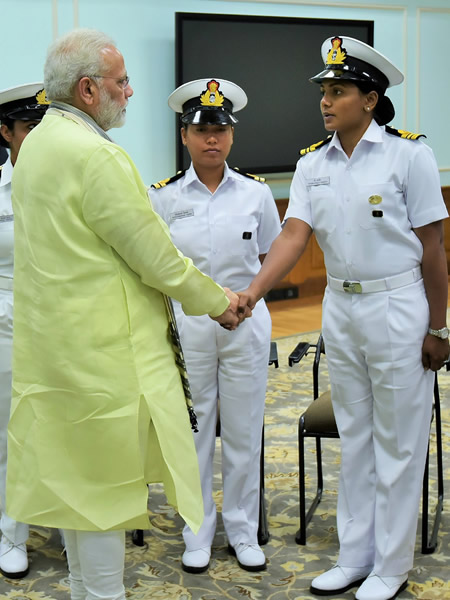
Photo: India Prime Minister Narendra Modi meeting Lt. Commander P. Swathi of Navika Sagar Parikrama expedition, in New Delhi on August 16, 2017. Image provided by the Press Information Bureau, Government of India.
Navika Sagar Parikrama is a project wherein a team of women officers of the Indian Navy would circumnavigate the globe on an Indian-built sail boat INSV Tarini.
The all-women crew have trained extensively for the forthcoming voyage. They have sailed approximately 20,000 Nm onboard INSV Mhadei and Tarini as part of training, which includes two expeditions to Mauritius (in 2016 and 2017) and a voyage from Goa to Cape Town in Dec 16.
This is the first ever Indian circumnavigation of the globe by an all-women crew. The project is considered essential towards promoting Ocean Sailing activities in the Navy while depicting Government of India’s thrust for ‘Nari Shakti’ (Women Power).
|GlobalGiants.Com|







Edited & Posted by Editor | 4:09 PM | Link to this Post
August 7, 2017
Naga Village Chieftains call on Prime Minister Modi
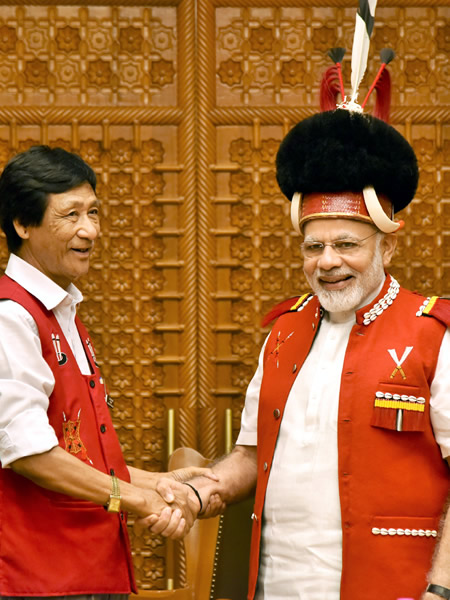
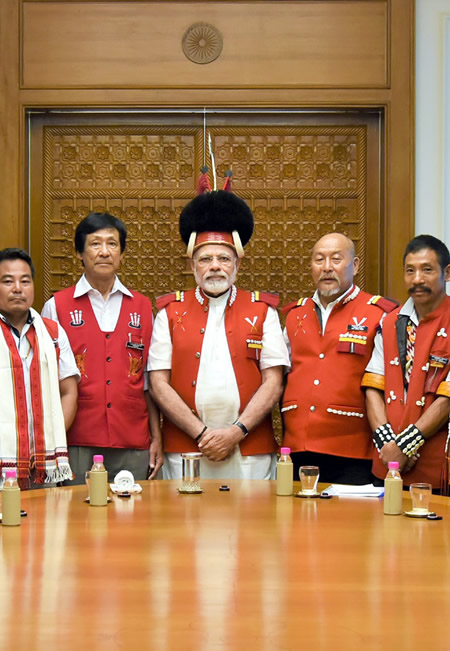
Photos: A 15 member delegation from Nagaland GB Federation - a body of Gaon Burahs (village chieftains) of all the Naga villages, called on the Prime Minister, Shri Narendra Modi, in New Delhi on August 03, 2017. Images provided by the Press Information Bureau, Government of India.
|GlobalGiants.Com|







Edited & Posted by Editor | 10:09 AM | Link to this Post
July 29, 2017
National Press Club, Washington, D.C., hosts Headliners Events on Two New Books — "Understanding Trump" and "The Smear"
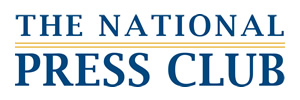
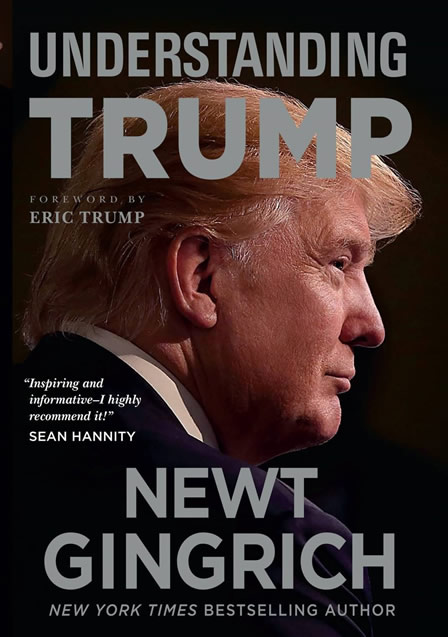
• Newt Gingrich Discusses New Book “Understanding Trump” at National Press Club Headliners Event, June 16
WASHINGTON, D.C. — Former Speaker of the House and 2012 presidential candidate Newt Gingrich appeared at a National Press Club Headliners Event on June 16th to discuss his new book, “Understanding Trump”.
In “Understanding Trump”, Gingrich shared what he learned from more than two years helping Donald J. Trump throughout his presidential campaign, during his transition from presidential candidate to Commander in Chief, and in his first few months in office. Gingrich provided a unique perspective on how the new president’s past experience as a business leader has shaped his political agenda and approach to governing the country.
The event featured a discussion with the author, an audience question-and-answer session, and a book signing.


• Sharyl Attkisson Brings “The Smear” to a National Press Club Headliners Book Event on August 31
WASHINGTON, D.C. — Former CBS News Correspondent Sharyl Attkisson, author of “The Smear: How Shady Political Operatives and Fake News Control What You See, What You Think and How You Vote,” will appear at a National Press Club Headliners Book Event on Thursday, August 31 at 6:30 p.m. in the Club’s Conference Room.
Attkisson is The New York Times bestselling author of “Stonewalled,” a five-time Emmy Award winner, and the host of “Full Measure with Sharyl Attkisson” offered by Sinclair. She is the recipient of the Edward R. Murrow Award for investigative reporting and has reported nationally for CBS News, PBS and CNN.
In “The Smear,” Attkisson reveals the world of opposition research and the dirty tricks those in power use to influence public opinion. Spin doctors and outside interests use a tactic known as “the Smear” to blindly influence the public, she writes, noting that there is an agenda by those pushing such fabricated stories.
The event will feature a discussion with the author, an audience question-and-answer session, and a book signing. Books will also be available for purchase at the event.
Proceeds from the two events would benefit the non-profit affiliate of the Club, the National Press Club Journalism Institute, which offers innovative, practical training to journalists and communications professionals working in a rapidly-changing media environment.
The National Press Club, the world’s leading professional organization for journalists, is located on the 13th Floor of the National Press Building at 529 14th St., NW, Washington, D.C.
|GlobalGiants.Com|
The Editor, Surender Hastir, is a Member of The National Press Club.







Edited & Posted by Editor | 2:27 PM | Link to this Post
June 21, 2017
Conversation on Yoga for Health
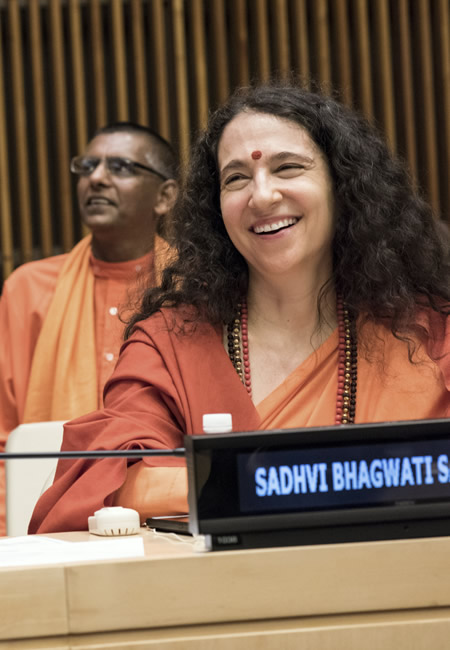
Photo: A scene from an event entitled “Conversation on Yoga for Health”, on the occasion of the International Day of Yoga. The event was co-organized by the Permanent Mission of India, the World Health Organization (WHO), and the UN Department of Public Information. Nata Menabde, Executive Director of the WHO Office at the UN, offered opening remarks. 21 June 2017. United Nations, New York. UN Photo/Kim Haughton.
|GlobalGiants.Com|







Edited & Posted by Editor | 9:00 PM | Link to this Post
June 12, 2017
World Oceans Day celebrated at UN Headquarters

Photo: Stilt dancers, musicians, and ritual processions came together at the UN Visitors’ Plaza in a new performance piece entitled “Ocean Calling” to mark World Oceans Day (June 8). The marine-centric work was created by artist Laura Anderson Barbata in collaboration with choreographer Chris Walker, The Brooklyn Jumbies, choreographer and dancer Mei Yamanaka, and Jarana Beat. The event was organized by the Office of the President of the General Assembly with TBA21-Academy. 08 June 2017. United Nations, New York. UN Photo/Manuel Elias.
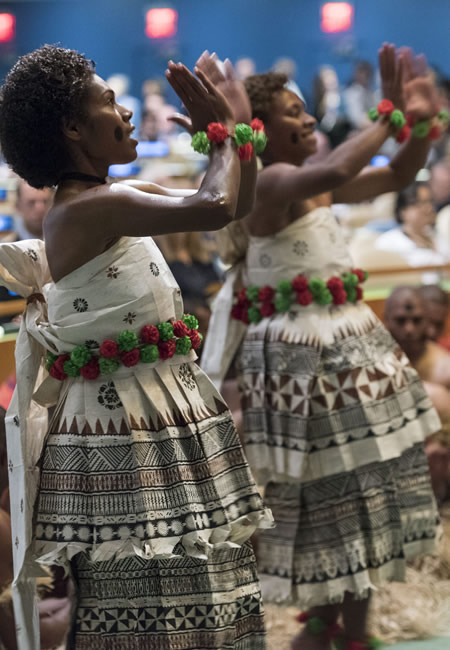
Photo: The Ocean Conference opens with a Fijian traditional welcome ceremony. The UN Ocean Conference took place at UN headquarters in New York from 5 to 9 June 2017, coinciding with World Oceans Day (8 June). Co-chaired by Fiji and Sweden, the Conference aimed to support the implementation of Sustainable Development Goal 14: Conserve and sustainably use the oceans, seas and marine resources for sustainable development. 05 June 2017. United Nations, New York. UN Photo/Mark Garten.
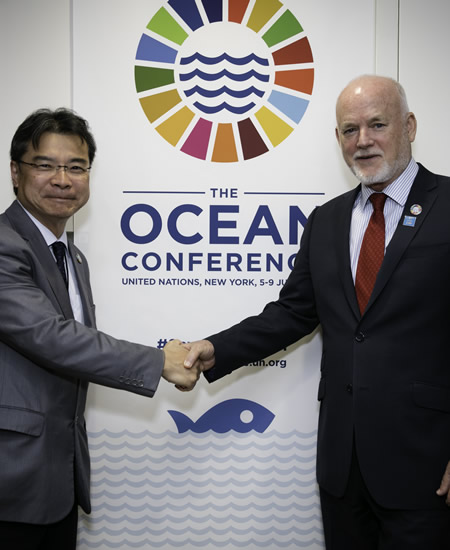
Photo: Peter Thomson (right), President of the seventy-first session of the UN General Assembly, meets with Yoshioka Tatsuya, Co-founder and Director of Peace Boat, on the margins of the 5-9 June Ocean Conference. 07 June 2017. United Nations, New York. UN Photo/Ariana Lindquist.
|GlobalGiants.Com|







Edited & Posted by Editor | 12:57 PM | Link to this Post
May 25, 2017
Observance of the International Day of United Nations Peacekeepers
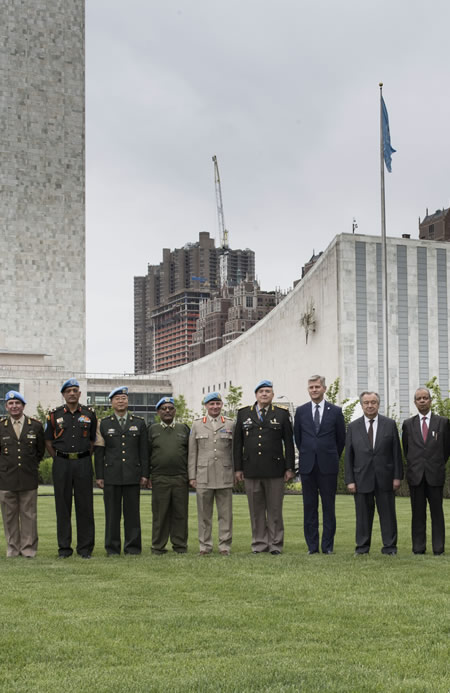
Photo: UN Secretary-General Antonio Guterres, Jean-Pierre Lacroix (left of Mr. Guterres), Under-Secretary-General for Peacekeeping Operations; and Atul Khare (right of Mr. Guterres), Under-Secretary-General for Field Support; pose for a group photo with Force Commanders of the Department of Peacekeeping Operations. 24 May 2017. United Nations, New York. UN Photo/Mark Garten.
|GlobalGiants.Com|







Edited & Posted by Editor | 12:50 AM | Link to this Post
May 2, 2017
International Jazz Day 2017 Worldwide Celebration concludes with Global Concert in Havana, Cuba
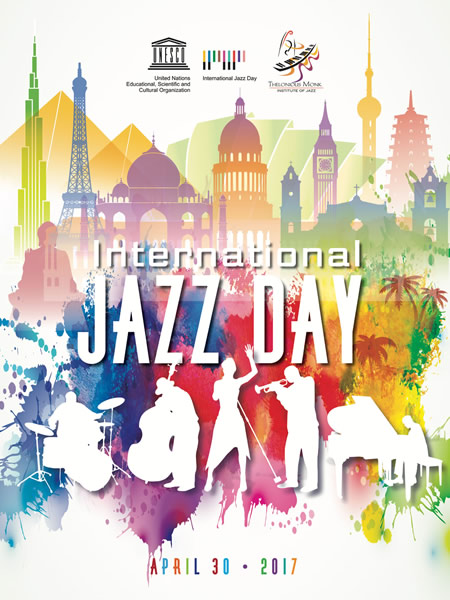

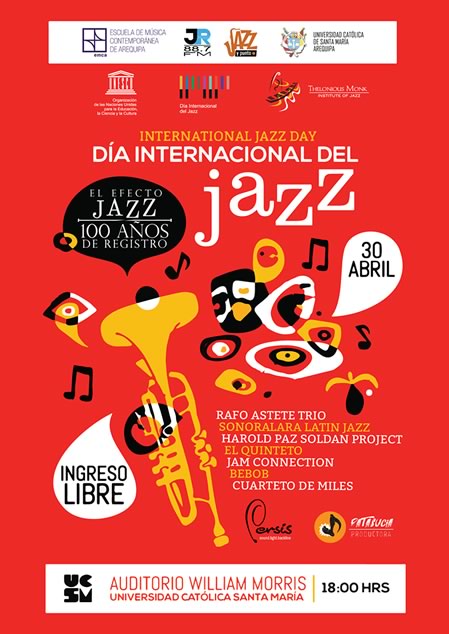
Havana, Cuba - Following thousands of events taking place in over 190 countries, International Jazz Day 2017 culminated in a concert streamed worldwide from Havana’s historic Gran Teatro de La Habana Alicia Alonso. As the International Jazz Day 2017 Global Host City, the musically vibrant city of Havana also presented a wide range of concerts and education programs.
Established by the United Nations Educational, Scientific and Cultural Organization (UNESCO) in coordination with the Thelonious Monk Institute of Jazz, International Jazz Day is recognized on the official calendars of UNESCO and the United Nations. Each year, on April 30, International Jazz Day highlights the role of jazz in promoting freedom, creativity and intercultural dialogue, and uniting people from all corners of the globe. Toyota served as Lead Partner of International Jazz Day 2017.
The Global Concert included an all-star group of musicians from Cuba and around the world performing “Cuba Bop” and “Manteca”. Cuban trumpet virtuoso Julio Padron played Freddie Hubbard’s composition, while the acclaimed vocalist Cassandra Wilson performed her composition “You Move Me”.
|GlobalGiants.Com|







Edited & Posted by Editor | 5:12 PM | Link to this Post
April 25, 2017
UNESCO paper shows governments not keeping pace with growing demand for higher education
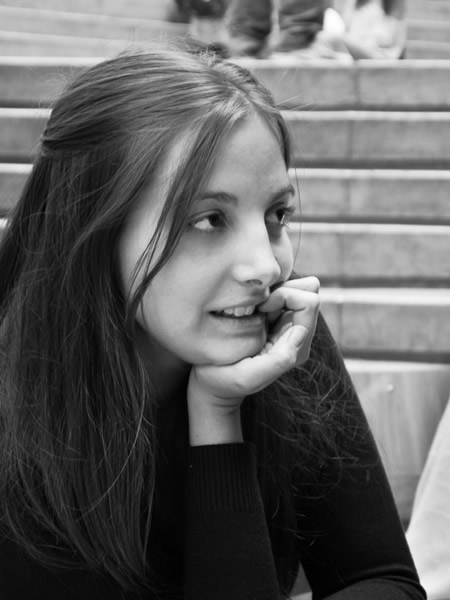
Photo: A College Student. Image Credit & Photographer: Francisco Osorio.
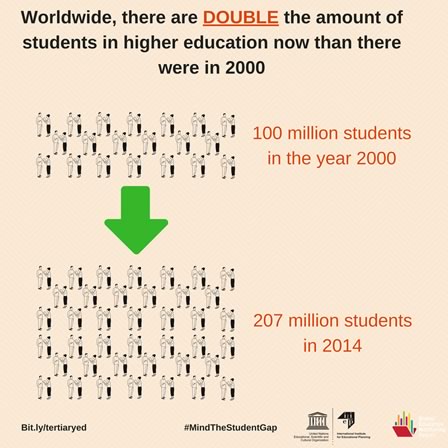
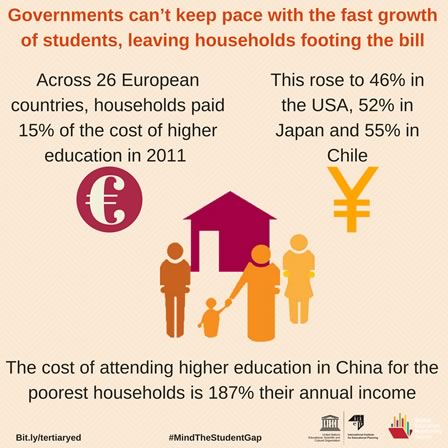
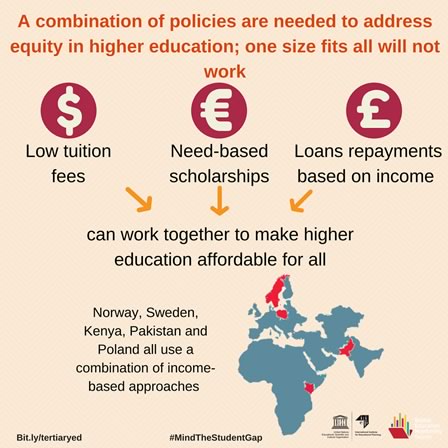
A new policy paper from the Global Education Monitoring (GEM) Report and the International Institute for Educational Planning (IIEP) at UNESCO shows that the number of university level students doubled to 207 million between 2000 and 2014. Governments are struggling to keep pace with rapidly rising demand and large disparities in access, with a large cost of higher education often falling to families, many of whom cannot afford it.
The new paper, Six ways to ensure higher education leaves no one behind, sets out a series of measures to make higher education more equitable and affordable, including to ensure that student loan repayments do not exceed 15% of a student’s monthly income. Anything more threatens to leave the disadvantaged behind.
“By creating and transmitting vital knowledge, skills and core values, higher education is a cornerstone for achieving the Sustainable Development Goals,” said Irina Bokova, Director-General of UNESCO. “Demand for higher education is going to continue rising. Governments must respond by introducing a range of new policies that will ensure expansion doesn’t leave the marginalised behind, and that access is based on merit, not privilege.”
Analyzing global trends, the paper also shows that only 1% of the poorest students have spent more than four years in higher education, compared to 20% of the richest.
In South Africa, around one-sixth of blacks and coloreds attended higher education in 2013, compared to over 50% of whites. Similarly, in Mexico, less than 1% of the indigenous population attend higher education. In China, youth from rural areas are seven times less likely to attend university than students from urban areas.
Access to higher education has expanded most rapidly in wealthier countries: Only 8% of young adults are enrolled on average in the poorest countries, compared to 74% in the richest countries. The greatest gender disparities are found among the poorest countries as well. Women made up only 30% of bachelor students in low-income countries in 2014.
“In certain countries with deeply rooted social inequities, affirmative action through quota or bonus systems may be necessary to expand access to underrepresented groups, even if these mechanisms are controversial,” says Suzanne Grant Lewis, director of the IIEP.
Private colleges and universities have expanded to cater to the growing pool of students, enrolling 30% of all students worldwide, rising to 50% in Latin America.
Governments can’t keep pace financially with this expansion and families are left with the tab. Across 26 countries in Europe, households paid for 15% of the cost of higher education in 2011. In other high-income countries, household expenditures were even higher: 40% in Australia, 46% in the USA, 52% in Japan, and 55% in Chile.
UNESCO, the only UN organization with responsibility for higher education, advises governments to use a combination of policies aimed at helping the disadvantaged, such as low tuition fees, need-based scholarships and loans repayments adjusted according to income, to help families manage the costs. The paper draws on a range of examples to show how different countries are expanding and diversifying higher education offerings to achieve greater equity.
“The last thing we want is for higher education to be the ball and chain around students’ ankles,” said Aaron Benavot, Director of the GEM Report. “Coping with dramatic student expansion is not easy, but there are policy solutions governments can put into place to stop the bill falling to households.”
Six specific recommendations are given to policy makers to make higher education equitable and affordable for all:
- Keep an eye on the target: Make sure those who need help the most are getting it.
- Put it into law: Guarantee equity and affordability in regulatory frameworks
- Step up monitoring: Establish national agencies to ensure equal opportunities
- Vary admissions criteria: Use different admissions criteria to respond to different individuals’ needs
- Provide varied student aid: Establish an agency to coordinate different forms of student aid, such as loans and grants
- Limit student loan repayments to <15% of their annual income.
|GlobalGiants.Com|







Edited & Posted by Editor | 3:32 PM | Link to this Post
April 18, 2017
Five University Teams reach finals of the “Fly Your Ideas 2017” Global Student Competition

Photo: The first Airbus A320 for Atlantic Airways - delivered in December 2016 - will be deployed on routes from the Faroe Islands to Copenhagen. Image provided by & Copyright © AIRBUS S.A.S. 2016 - photo by C. BRINKMANN.
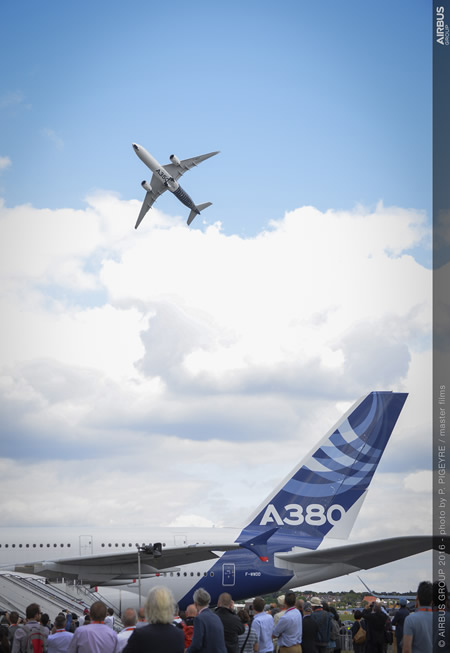
Photo: Airbus’ widebody A350 XWB and A380 were among the commercial jetliners on display - flying and static - during the Farnborough International Airshow. Image provided by & Copyright © AIRBUS GROUP 2016 - photo by P. PIGEYRE / master films.
Five student teams from Australia, China, France, Nigeria and the United Kingdom will compete in the final round of the fifth edition of Airbus’ Fly Your Ideas global challenge, organised in partnership with UNESCO. The radical concepts selected cover a wide range of innovations going from an alternative to satellite imagery, to improved aircraft taxiing, clever ways of boarding, new areas for luggage storage or offering a new business model using existing Airbus aircraft.
Representing different nationalities and universities across Africa, Europe and Asia-Pacific, the five finalist teams embody true diversity, which is a key driver of innovation and performance. The students, competing for a €30,000 prize, also demonstrate a wide variety of disciplines from Natural Sciences to Engineering and Business.
Their inventive ideas, which were selected from over 350 entries, had to answer one of five challenges identified by Airbus to provide sustainable future solutions. The innovations proposed by the five finalist teams look at alternative business models, passengers’ experience and flight operations.
The five finalist teams will soon travel to Toulouse, France, where they will spend a week at the Airbus ProtoSpace facility to prototype, test and visualise their ideas using state-of-the-art equipment with personal guidance from Airbus. At the end of their week at Airbus, the students will present their innovative projects and the newly developed prototype in front of Airbus and UNESCO experts and personalities from the aerospace and academic world. The competition offers a unique opportunity for students worldwide, working in diverse teams of 3-5 members, to develop valuable skills, including teamwork, project management, communications and presentation, and to get involved in engineering.
The ideas competing for the final prize are:
• Airborne Earth Observation - Team SkyVision
University of Surrey, UK
A radical concept that turns a commercial airliner into an ‘Earth Observation Device’ by installing equipment into the belly of the aircraft to monitor ground activity during flight. An alternative to satellite imagery, it opens up new opportunities such as ecology analysis and urban planning.
• Improving Airport Taxi Flow and Efficiency - Team Nevada
Obafemi Awolowo University, Nigeria
An airport taxiing system that uses sensors and algorithms for automated Ground Traffic Control, both in the tower and on the aircraft, to significantly improve aircraft traffic at airports and thus reduce emissions.
• Compact Luggage Strategy Mobile App - Team PassEx
Institut d’Administration des Entreprises - IAE Toulouse, France
A revolutionary boarding system that uses a real-time mobile app to assign boarding status to passengers according to their luggage size. The Compact Luggage Strategy (CLS) addresses current storage issues in over-head compartments by distributing passengers across the aircraft according to the size of their baggage.
• Private Stowage Compartment - Team DAELead
University of Hong Kong, China
A clever aircraft cabin design that locates a Private Stowage Compartment (PSC) underneath passengers’ feet, utilizing the space between the cabin floor and the cargo ceiling.
• A400M Aerial Firefighting Platform - Team Aquarius
Royal Melbourne Institute of Technology, Australia
A fire-fighting solution that incorporates modular systems using pressurized fire retardant containers fixed to fast-loadable pallets for a network of Airbus A400M aircraft, to create a system of aerial firefighting platforms that can be used for rapid wildfire suppression.
|GlobalGiants.Com|
AIRBUS Fly Your Ideas. Previous Online Coverage by “Global Giants” (December 22, 2016)







Edited & Posted by Editor | 11:13 AM | Link to this Post
April 3, 2017
India's Minister of Human Resource Development, Prakash Javadekar, Releases ‘India Rankings 2017’
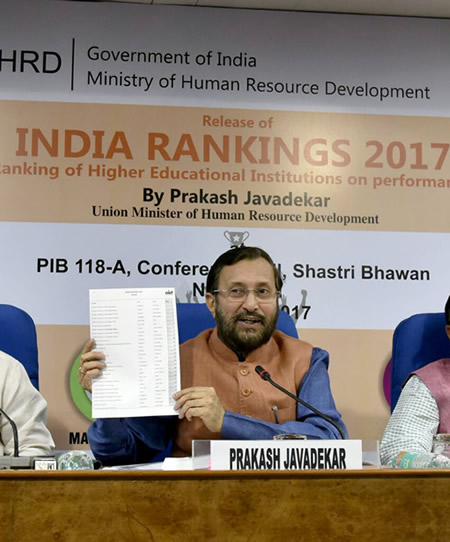
Photo: India’s Union Minister for Human Resource Development, Shri Prakash Javadekar, releasing the “INDIA RANKING 2017”, in New Delhi on April 03, 2017. Image provided by the Press Information Bureau, Government of India.
New Delhi, India. April 03, 2017. India’s Union Minister of Human Resource Development, Shri Prakash Javadekar, released the India Rankings 2017 for the Educational Institutions and dedicated it to the nation in New Delhi today.
Speaking on the occasion he said that this step is a sequel of our Government’s commitment towards bringing landmark changes in the quality of education provided to students across the country for which we are working relentlessly. Shri Javadekar said this ranking is meant to have beginning of a fair competition among the institutions for achieving excellence in their efforts.
• The Minister said now institutions, parents, students, and others will have authentic information about the ranking and quality of a particular university, college, or vocational institution and this has led to the global scaling up of our credentials.
The Minister on this occasion also announced that government will extend more help to quality education institutions. It’s a vital change of policy and will motivate all the institutions to perform and excel. Factors regarding number of research papers submitted, patents obtained and campus placement figures will also count for seeking government support. He said public perception, employer perception and academic perception will also be given importance.
A very exciting feature of this year’s Rankings is the ranking of General Degree Colleges in Arts and Sciences from across the country. While many of the names appearing in the top-100 list are well known and famous, there are many others who may not be so well known but have fared well.
OVERALL INSTITUTIONS (INCLUDING UNIVERSITIES)
Rank — Institution — City — State — Score
- Indian Institute of Science Bangalore Bengaluru Karnataka 83.28
- Indian Institute of Technology Madras Chennai Tamil Nadu 73.97
- Indian Institute of Technology Bombay Mumbai Maharashtra 71.78
- Indian Institute of Technology Kharagpur Kharagpur West Bengal 68.43
- Indian Institute of Technology Delhi New Delhi Delhi 64.18
- Jawaharlal Nehru University New Delhi Delhi 61.53
- Indian Institute of Technology Kanpur Kanpur Uttar Pradesh 60.69
- Indian Institute of Technology Guwahati Guwahati Assam 60.37
- Indian Institute of Technology Roorkee Roorkee Uttarakhand 59.84
- Banaras Hindu University Varanasi Uttar Pradesh 58.92
- Jawaharlal Nehru Centre for Advanced Scientific Research Bengaluru Karnataka 58.25
- Jadavpur University Kolkata West Bengal 57.32
- Anna University Chennai Tamil Nadu 56.50
- University of Hyderabad Hyderabad Telangana 56.30
- University of Delhi Delhi Delhi 55.37
- Amrita Vishwa Vidyapeetham Coimbatore Tamil Nadu 54.70
- Indian Institute of Management Ahmedabad Ahmedabad Gujarat 54.27
- Savitribai Phule Pune University Pune Maharashtra 52.81
- Aligarh Muslim University Aligarh Uttar Pradesh 52.74
- Jamia Millia Islamia New Delhi Delhi 51.75
- Birla Institute of Technology & Science -Pilani Pilani Rajasthan 51.46
- Vellore Institute of Technology Vellore Tamil Nadu 51.36
- Indian Agricultural Research Institute New Delhi Delhi 51.20
- Indian Institute of Technology Indore Indore Madhya Pradesh 50.23
- Indian Institute of Management Bangalore Bengaluru Karnataka 49.26
- Indian Institute of Technology Hyderabad Hyderabad Telangana 49.07
- Calcutta University Kolkata West Bengal 48.90
- Tamil Nadu Agricultural University Coimbatore Tamil Nadu 48.84
- Indian Institute of Science Education & Research, Pune Pune Maharashtra 48.28
- Manipal Academy of Higher Education-Manipal Manipal Karnataka 48.27
- Visva Bharati Kolkata West Bengal 48.19
- Indian Institute of Technology Ropar Rupnagar Punjab 47.84
- Siksha
OAnusandhan University Bhubaneswar Odisha 46.72 - National Institute of Technology Tiruchirappalli Tiruchirappalli Tamil Nadu 46.57
- Homi Bhabha National Institute Mumbai Maharashtra 46.45
- Bharath Institute of Higher Education & Research Chennai Tamil Nadu 46.45
- Indian Institute of Technology Mandi Mandi Himachal Pradesh 45.62
- Osmania University Hyderabad Telangana 45.52
- Indian Institute of Management Calcutta Kolkata West Bengal 45.17
- Punjab Agricultural University, Ludhiana Ludhiana Punjab 44.99
- Institute of Chemical Technology Mumbai Maharashtra 44.95
- Jamia Hamdard New Delhi Delhi 44.84
- Gauhati University Guwahati Assam 44.42
- Indian Institute of Science Education & Research, Kolkata Mohanpur West Bengal 44.38
- Bharathiar University Coimbatore Tamil Nadu 44.29
- National Institute of Technology Rourkela Rourkela Odisha 44.02
- Kerala University Thiruvananthapuram Kerala 43.95
- Tezpur University Tezpur Assam 43.78
- TATA Institute of Social Sciences Mumbai Maharashtra 43.71
- Shanmugha Arts Science Technology & Research Academy (SASTRA) Thanjavur Tamil Nadu 43.50
- Indian Institute of Management Lucknow Lucknow Uttar Pradesh 43.35
- Indian Institute of Science Education & Research, Mohali Mohali Punjab 43.27
- Indian Institute of Technology (Indian School of Mines) Dhanbad Jharkhand 43.21
- Panjab University Chandigarh Chandigarh 43.13
- S.R.M Institute of Science and Technology Chennai Tamil Nadu 43.07
- Indian Institute of Space Science and Technology Thiruvananthapuram Kerala 43.06
- Mysore University Mysore Karnataka 42.83
- National Institute of Pharmaceutical Education and Research, Hyderabad Hyderabad Telangana 42.74
- Pondicherry University Puducherry Pondicherry 42.70
- Tamil Nadu Veterinary & Animal Sciences University Chennai Tamil Nadu 42.48
- Sri Ramachandra University Chennai Tamil Nadu 42.46
- Anand Agricultural University Anand Gujarat 42.26
- Indian Institute of Management Udaipur Udaipur Rajasthan 42.15
- University of Madras Chennai Tamil Nadu 41.85
- National Institute of Technology Surathkal Surathkal Karnataka 41.80
- Indian Institute of Technology Bhubaneswar Bhubaneswar Odisha 41.75
- Indian Institute of Management Tiruchirappalli Tiruchirappalli Tamil Nadu 41.73
- Sri Venkateswara University Tirupati Andhra Pradesh 41.48
- Andhra University Visakhapatnam Andhra Pradesh 41.38
- Indian Institute of Technology (Banaras Hindu University), Varanasi Varanasi Uttar Pradesh 41.37
- Indian Institute of Management Kashipur Kashipur Uttarakhand 41.36
- Sathyabama Institute of Science and Technology Chennai Tamil Nadu 41.30
- Indian Institute of Engineering Science and Technology, Shibpur Howrah West Bengal 41.28
- Jagadguru Sri Shivarathreeshwara University Mysore Karnataka 41.18
- Thapar University Patiala Punjab 40.78
- Dr. D. Y. Patil Vidyapeeth Pune Pune Maharashtra 40.59
- North Eastern Hill University Shillong Meghalaya 40.51
- Indian Institute of Technology Gandhinagar Ahmedabad Gujarat 40.48
- Kalinga Institute of Industrial Technology Bhubaneswar Odisha 40.47
- Sri Sivasubrmaniya Nadar College of Engineering Kalavakkam Tamil Nadu 40.31
- Guru Angad Dev Veterinary & Animal Sciences University Ludhiana Punjab 40.10
- National Institute of Technology Warangal Warangal Telangana 40.05
- Indian Institute of Technology Patna Patna Bihar 39.87
- Dr. Y.S.Parmar University of Horticulture & Forestry Solan Himachal Pradesh 39.54
- Indian Institute of Management Kozhikode Kozhikode Kerala 39.20
- AMITY University Gautam Budh Nagar Uttar Pradesh 39.17
- Indian Institute of Crop Processing Technology Thanjavur Tamil Nadu 39.15
- PSG College of Technology Coimbatore Tamil Nadu 39.07
- Banasthali Vidyapith Banasthali Rajasthan 38.74
- Bharati Vidyapeeth Pune Maharashtra 38.73
- Saveetha Institute of Medical and Technical Sciences Chennai Tamil Nadu 38.68
- Annamalai University Annamalainagar Tamil Nadu 38.59
- Calicut University Calicut Kerala 38.45
- Mizoram University Aizwal Mizoram 38.36
- Kurukshetra University Kurushetra Haryana 38.26
- Shiv Nadar University Chithera Uttar Pradesh 37.95
- Symbiosis International University Pune Maharashtra 37.67
- Indian Institute of Science Education & Research, Bhopal Bhopal Madhya Pradesh 37.32
- Rajiv Gandhi Indian Institute of Management Shillong Meghalaya 37.28
- Academy of Higher Education and Research Belagavi Karnataka 37.25
UNIVERSITIES
Rank — University — City — State — Score
- Indian Institute of Science Bangalore Bengaluru Karnataka 83.28
- Jawaharlal Nehru University New Delhi Delhi 61.53
- Banaras Hindu University Varanasi Uttar Pradesh 58.92
- Jawaharlal Nehru Centre for Advanced Scientific Research Bengaluru Karnataka 58.25
- Jadavpur University Kolkata West Bengal 57.32
- Anna University Chennai Tamil Nadu 56.50
- University of Hyderabad Hyderabad Telangana 56.30
- University of Delhi Delhi Delhi 55.37
- Amrita Vishwa Vidyapeetham Coimbatore Tamil Nadu 54.70
- Savitribai Phule Pune University Pune Maharashtra 52.81
- Aligarh Muslim University Aligarh Uttar Pradesh 52.74
- Jamia Millia Islamia New Delhi Delhi 51.75
- Birla Institute of Technology & Science -Pilani Pilani Rajasthan 51.46
- Vellore Institute of Technology Vellore Tamil Nadu 51.36
- Indian Agricultural Research Institute New Delhi Delhi 51.20
- Calcutta University Kolkata West Bengal 48.90
- Tamil Nadu Agricultural University Coimbatore Tamil Nadu 48.84
- Manipal Academy of Higher Education-Manipal Manipal Karnataka 48.27
- Visva Bharati Kolkata West Bengal 48.19
- Siksha
OAnusandhan University Bhubaneswar Odisha 46.72 - Homi Bhabha National Institute Mumbai Maharashtra 46.45
- Bharath Institute of Higher Education & Research Chennai Tamil Nadu 46.45
- Osmania University Hyderabad Telangana 45.52
- Punjab Agricultural University, Ludhiana Ludhiana Punjab 44.99
- Institute of Chemical Technology Mumbai Maharashtra 44.95
- Jamia Hamdard New Delhi Delhi 44.84
- Gauhati University Guwahati Assam 44.42
- Bharathiar University Coimbatore Tamil Nadu 44.29
- Kerala University Thiruvananthapuram Kerala 43.95
- Tezpur University Tezpur Assam 43.78 30
- TATA Institute of Social Sciences Mumbai Maharashtra 43.71
- Shanmugha Arts Science Technology & Research Academy (SASTRA) Thanjavur Tamil Nadu 43.50
- Panjab University Chandigarh Chandigarh 43.13
- S.R.M Institute of Science and Technology Chennai Tamil Nadu 43.07
- Indian Institute of Space Science and Technology Thiruvananthapuram Kerala 43.06
- Mysore University Mysore Karnataka 42.83
- Pondicherry University Puducherry Pondicherry 42.70
- Tamil Nadu Veterinary & Animal Sciences University Chennai Tamil Nadu 42.48
- Sri Ramachandra University Chennai Tamil Nadu 42.46
- Anand Agricultural University Anand Gujarat 42.26
- University of Madras Chennai Tamil Nadu 41.85
- Sri Venkateswara University Tirupati Andhra Pradesh 41.48
- Andhra University Visakhapatnam Andhra Pradesh 41.38
- Sathyabama Institute of Science and Technology Chennai Tamil Nadu 41.30
- Jagadguru Sri Shivarathreeshwara University Mysore Karnataka 41.18
- Thapar University Patiala Punjab 40.78
- Dr. D. Y. Patil Vidyapeeth Pune Pune Maharashtra 40.59
- North Eastern Hill University Shillong Meghalaya 40.51
- Kalinga Institute of Industrial Technology Bhubaneswar Odisha 40.47
- Guru Angad Dev Veterinary & Animal Sciences University Ludhiana Punjab 40.10
- Dr. Y.S.Parmar University of Horticulture & Forestry Solan Himachal Pradesh 39.54
- AMITY University Gautam Budh Nagar Uttar Pradesh 39.17
- Banasthali Vidyapith Banasthali Rajasthan 38.74
- Bharati Vidyapeeth Pune Maharashtra 38.73
- Saveetha Institute of Medical and Technical Sciences Chennai Tamil Nadu 38.68
- Annamalai University Annamalainagar Tamil Nadu 38.59
- Calicut University Calicut Kerala 38.45
- Mizoram University Aizwal Mizoram 38.36
- Kurukshetra University Kurushetra Haryana 38.26
- Shiv Nadar University Chithera Uttar Pradesh 37.95
- Symbiosis International University Pune Maharashtra 37.67
- KLE Academy of Higher Education and Research Belagavi Karnataka 37.25
- University of Jammu Jammu Tawi Jammu and Kashmir 37.23
- Goa University-Goa Goa Goa 37.16
- Vel Tech Rangarajan Dr.Sagunthala R&D Institute of Science and Technology Chennai Tamil Nadu 37.13
- Kalyani University Kalyani West Bengal 36.84
- Mahatma Gandhi Unversity Kottayam Kerala 36.79
- Rajasthan University of Veterinary & Animal Sciences Bikaner Rajasthan 36.78
- Sri Sathya Sai Institute of Higher Learning Anantapur Andhra Pradesh 36.75
- Meenakshi Academy of Higher Education and Research Chennai Tamil Nadu 36.47
- Karunya Institute of Technology and Sciences-Coimbatore Coimbatore Tamil Nadu 36.44
- Dayalbagh Educational Institute Agra Uttar Pradesh 36.36
- University of Kashmir Srinagar Jammu and Kashmir 36.32
- Dibrugarh University Dibrugarh Assam 36.28
- Nirma University Ahmedabad Gujarat 36.21
- Rajiv Gandhi University Rono Hills Arunachal Pradesh 36.15
- Madurai Kamraj University Madurai Tamil Nadu 36.04
- Sri Venkateswara Veterinary University Tirupati Andhra Pradesh 35.92
- Rajasthan University Jaipur Rajasthan 35.85
- Guru Nanak Dev University Amritsar Punjab 35.83
- Jaypee Institute of Information Technology Noida Uttar Pradesh 35.69
- Guru Gobind Singh Indraprastha University Dwarka Delhi 35.60
- Sri Balaji Vidyapeeth Mahatma Gandhi Medical College Campus Puducherry Pondicherry 35.50
- NITTE University Mangalore Karnataka 35.50
- Periyar University Salem Tamil Nadu 35.44
- Cochin University of Science and Technology Cochin Kerala 35.42
- Vidyasagar University Midnapore West Bengal 35.23
- Bharathidasan University Tiruchirappalli Tamil Nadu 35.14
- Gandhi Institute of Technology and Management (GITAM) Visakhapatnam Andhra Pradesh 35.09
- Karpagam Academy of Higher Education Coimbatore Tamil Nadu 34.86
- The Gandhigram Rural Institute - Deemed University Gandhigram Tamil Nadu 34.56
- Assam University-Silchar Silchar Assam 34.38
- Jaypee University of Information Technology-Solan Solan Himachal Pradesh 34.14
- PES University Bengaluru Karnataka 33.94
- University of Allahabad Allahabad Uttar Pradesh 33.86
- Sri Krishnadevaraya University Anantapur Andhra Pradesh 33.76
- Alagappa University Karaikudi Tamil Nadu 33.66
- Narsee Monjee Institute of Management Studies -Mumbai Mumbai Maharashtra 33.60
- Jawaharlal Nehru Technological University Kakinada Andhra Pradesh 33.44
- B.S. Abdur Rahman Institute of Science and Technology Chennai Tamil Nadu 32.99
COLLEGES
Rank — College — City — State — Score
- Miranda House Delhi Delhi 69.39
- Loyola College District Chennai Tamil Nadu 68.68
- Shri Ram College of Commerce Delhi Delhi 67.18
- Bishop Heber College District Tiruchirapalli Tamil Nadu 61.18
- Atma Ram Sanatan Dharma College New Delhi Delhi 60.68
- St. Xavier`s College Kolkata West Bengal 59.12
- Lady Shri Ram College for Women New Delhi Delhi 58.28
- Dyal Singh College New Delhi Delhi 58.22
- Deen Dayal Upadhyaya College New Delhi Delhi 58.06
- The Women’s Christian College Chennai Tamil Nadu 57.37
- P.S.G. College of Arts & Science District Coimbatore Tamil Nadu 55.64
- Madras Christian College District Kancheepuram Tamil Nadu 55.44
- Ayya Nadar Janaki Ammal College District Virudhnagar Tamil Nadu 54.62
- P.S.G.R. Krishnammal College for Women District Coimbatore Tamil Nadu 53.97
- Keshav Mahavidyalya Delhi Delhi 53.21
- Ethiraj College for Women Chennai Tamil Nadu 52.85
- Christ College (Autonomous) Thrissur Kerala 52.62
- Loreto College Calcutta-16 West Bengal 51.85
- Kongunadu Arts & Science College District Coimbatore Tamil Nadu 51.84
- Acharya Narendra Dev College Kalkaji Delhi 51.06
- AU College of Science and Technology Visakhapatnam Andhra Pradesh 50.85
- Sri Krishna Arts and Science College Coimbatore Tamil Nadu 50.80
- AU College of Arts and Commerce Visakhapatnam Andhra Pradesh 49.73
- Andhra Loyola College Vijayawada Andhra Pradesh 49.41
- Rajagiri College of Social Sciences Dist. Ernakulam Kerala 48.90
- Holy Cross College District Tiruchirapalli Tamil Nadu 48.13
- Fatima College (Autonomous) Madurai Tamil Nadu 47.95
- Sacred Heart College Dist. Ernakulam Kerala 47.24
- St. Joseph`s College of Commerce Bengaluru Karnataka 47.21
- Rajiv Gandhi Institute of Information Technology and Biotechnology (RGIITBT) Pune Maharashtra 47.04
- St. Joseph’s College Dist. Calicut Kerala 46.73
- Post Graduate Government College for Girls Chandigarh Chandigarh 46.54
- Ramanujan College Kalkaji Delhi 45.92
- Shaheed Bhagat Singh College (Evening Classes) New Delhi Delhi 45.76
- Fergusson College Dist. Pune Maharashtra 45.51
- Degree College of Physical Education Dist. Amravati Maharashtra 45.48
- Shri M.V. & Smt. N.V. Virani Science College Dist. Rajkot Gujarat 45.31
- V.V. Vanniaperumal College for Women District Virudhnagar Tamil Nadu 45.06
- Virudhunagar Hindu Nadars Senthikumara Nadar College District Virudhnagar Tamil Nadu 44.80
- St. Xavier’s College Mumbai Maharashtra 44.67
- Goswami Ganesh Dutta S.D. College Sector 32 Chandigarh Chandigarh 44.56
- St. Joseph’s College Dist. Trichur Kerala 44.35
- A.V.C. College-District Quaide-E-Milleth District Quaide-E-Milleth Tamil Nadu 44.29
- Dr. N.G.P. Arts & Science College District Coimbatore Tamil Nadu 44.00
- St Aloysius College (Autonomous) Mangalore Karnataka 44.00
- Sri Guru Nanak Dev Khalsa College New Delhi Delhi 43.86
- Justice Baseer Ahmed Sayeed College for Women Chennai Tamil Nadu 43.77
- Mercy College Dist. Palakkad Kerala 43.68
- Little Flower College District Trichur Kerala 43.59
- K.S. Rangaswamy College of Arts and Science Tiruchengode Tamil Nadu 43.32
- MES Keveeyam College Valanchary Kerala 43.30
- Vimla College Dist. Trichur Kerala 43.23
- Government College of Arts, Science and Commerce Quepem Quepem Goa 43.18
- Holy Cross College District Kanyakumari Tamil Nadu 43.17
- St. Mary’s College Dist. Trichur Kerala 42.72
- Saiva Bhanu Kshatriya College District Virudhnagar Tamil Nadu 42.57
- Gobi Arts and Science College-Karattatipalayam Post Karattatipalayam Post Tamil Nadu 42.39
- Vivekanand College Kolhapur Maharashtra 42.26
- Shri Shankarlal Sundarbai Shasun Jain College for Women Chennai Tamil Nadu 42.07
- Meenakshi College for Women District Chennai Tamil Nadu 42.07
- Vitthalbhai Patel and Rajrathan, P.T. Patel Science College Dist. Anand Gujarat 41.99
- Srimathi D.N. Bhat Vaishnav College for Women District Kancheepuram Tamil Nadu 41.91
- Kongu Arts & Science College District Erode Tamil Nadu 41.90
- J.B. College District Jorhat Assam 41.81
- Nirmala College for Women District Coimbatore Tamil Nadu 41.73
- Rathinam College of Arts and Science Coimbatore Tamil Nadu 41.69
- Mahendra Arts & Science College Namakkal Tamil Nadu 41.33
- Sri Ramakrishna College of Arts & Science for Women District Coimbatore Tamil Nadu 40.89
- SNR Sons College Coimbatore Tamil Nadu 40.29
- St. Teresa’s College Dist. Ernakula Kerala 40.10
- Sri D. Manjunatheswara College Dist. Dakshin Kannad Karnataka 39.96
- Nanded Education Society`s Science College Nanded Maharashtra 39.47
- Mannam Memroial N.S.S. College Kollam Kerala 38.99
- Mehr Chand Mahajan D.A.V. College for Women Sector-36 Chandigarh Chandigarh 38.84
- Hindusthan College of Arts and Science Coimbatore Tamil Nadu 38.65
- K.S.R. College of Arts and Science for Women Namakkal Tamil Nadu 38.60
- Bahauddin Govt. Science College Dist. Junagadh Gujarat 38.42
- Rama Krishna Mission Vivekananda Centenary College Rahara West Bengal 38.29 78
- S.D.M.S.M. Kalasala District Krishna Andhra Pradesh 38.28 79
- Dr. V.S.Krishna Govt. Degree College Visakhapatnam Andhra Pradesh 38.19 80
- Symbiosis College of Arts and Commerce Pune Maharashtra 38.05
- S R M College of Arts and Science Potheri Tamil Nadu 38.03
- Sai College of Computer Education Dist. Osmanabad Maharashtra 37.93
- Assumption College Dist. Kottayam Kerala 37.92
- Gayatri Vidya Parishad College for Degree and P.G Courses (Autonomous) District Visakapatnam Andhra Pradesh 37.56
- Muthayammal College of Arts & Science Namakkal Tamil Nadu 37.46
- St. Josephs College for Women, (Autonomous) Visakhapatnam Andhra Pradesh 37.15
- Jankidevi Bajaj College of Science District Wardha Maharashtra 37.07
- P.C. Jabin Science College Dist. Dharwad Karnataka 36.87
- Govt. College District Anantapur Andhra Pradesh 36.82
- Nirmala College Dist. Ernakulam Kerala 36.53
- K.B.N. College District Krishna Andhra Pradesh 36.36
- V.S.M. College Ramachandrapuram Andhra Pradesh 36.15
- J.G. College of Commerce Hubli, Dist. Dharwad Karnataka 36.03
- Sacred Heart College (Autonomous) Tirupattur Tamil Nadu 35.43
- Presidency College Bengaluru Karnataka 35.23
- National College District Tiruchirapalli Tamil Nadu 34.93
- Raja Narendralal Khan Women’s College District Midnapore West Bengal 34.73
- Bharti Vidyapeeth`s Matoshri Bayabai Shripatrao Kadam Kanya Mahavidyalaya Dist. Sangli Maharashtra 34.69
- Thanthai Hans Roever College Perambalur Tamil Nadu 34.65
• Application by a College for Autonomous Status
New Delhi, India. April 06, 2017. India’s University Grants Commission (UGC) has implemented the scheme of Autonomous Colleges with a view to bring in quality reforms in higher education. The Scheme of Autonomous Colleges offers academic and operative freedom to the Colleges. The autonomy so awarded under the scheme enables a College to determine and prescribe its own courses of study and syllabi and restructure and redesign the courses to suit local needs and to devise innovative methods of teaching, examination and evaluation.
The scheme of Autonomous Colleges is open for all Colleges. Any number of Colleges under a University can apply for award of autonomous status to UGC under this scheme. However, Colleges are granted autonomous status only when they fulfill conditions as prescribed in the guidelines of the scheme of Autonomous Colleges.
This information was given by the Minister of State (HRD), Dr. Mahendra Nath Pandey, today ( April 06, 2017), in a written reply to a question in the parliament.
|GlobalGiants.Com|







Edited & Posted by Editor | 12:47 PM | Link to this Post
February 21, 2017
UNESCO Creative Cities Network announces Call for Applications
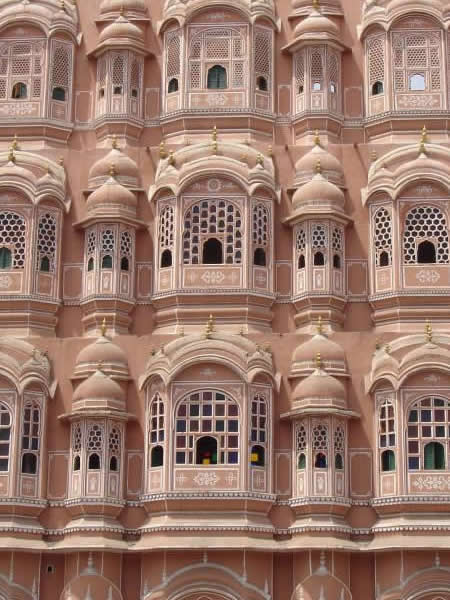
Photo: A Section of Hawa Mahal (Palace of Winds), Jaipur, India. Jaipur was designated a UNESCO Creative City in 2015. Image Credit: David Hamill.
Created in 2004, the UNESCO Creative Cities Network (UCCN) fosters international cooperation with and between cities that have identified creativity as a strategic driver and enabler for sustainable urban regeneration and development.
Today the Network brings together 116 cities from 54 countries, working towards common objectives: placing creativity and cultural industries at the core of local development plans, and actively cooperating through inter-city partnerships at the international level.
The UCCN is a flagship programme of UNESCO for the implementation of the Sustainable Development Goals (SDGs) of the 2030 Agenda, and the New Urban Agenda, at the local level.
UNESCO has invited cities worldwide, who are interested in joining the Network, to submit their applications using the official 2017 Application Form. Applications must be received by UNESCO Secretariat no later than 16 June 2017, midnight CET. Applications received after this deadline will not be evaluated.
Following the evaluation process carried out by internal and external consultations with independent experts and the member cities of the Network, the Director-General of UNESCO would designate the new UNESCO Creative Cities and the announcement of the Creative Cities designated in 2017 will be published on the UNESCO website on 31 October 2017.
|GlobalGiants.Com|







Edited & Posted by Editor | 9:03 AM | Link to this Post
February 15, 2017
Montreal Replaces Paris as World's Best Student City


Photo: University Students. Image Credit & Photographer: Francisco Osorio.
LONDON, February 15, 2017 — Montreal, Canada, has topped the QS Best Student Cities Rankings 2017.
Montreal’s success is the latest of a series of propitious signs for a city beginning to escape a period of economic stagnation, following positive growth forecasts for 2017, and the recent announcement of its selection as the ‘World’s Most Intelligent City’. Its first-place ranking is also the highlight of a series of positive performances from Canadian cities.
Paris drops to second place, receiving reduced rank for Affordability and Desirability.
While London rises from fifth place to third place suggesting that UK cities remain excellent study destinations in the face of Brexit, with rises in QS’s Affordability indicator a major contributor to all eight of its ranked cities improving their rank.
Affordability issues adversely affect American cities: though Boston places eighth, ten of its twelve ranked cities drop.
Australia’s high cost-of-living and tuition fees are proving disadvantageous: all of its seven ranked cities drop, with Sydney plummeting from fourth to thirteenth, and Melbourne falling from second to fifth.
Seoul is Asia’s best student city, rising to 4th, followed by Tokyo (7th) , Hong Kong (11th) and Singapore (14th).
Berlin rises to 6th; while Munich (9th) and Vancouver (10th) complete the top 10.
For the first time, two cities from India, Mumbai and New Delhi, get included in the World’s Best Student Cities.
This year’s ranking features a ‘Student View’ indicator for the first time.
Over 18,000 students responded to QS’s inaugural survey for this ranking, providing input about their own student experiences, and, for prospective students, the relative desirability of a city.
QS BEST STUDENT CITIES 2017
RANK — CITY — COUNTRY
- Montreal — Canada
- Paris — France
- London — United Kingdom
- Seoul — South Korea
- Melbourne — Australia
- Berlin — Germany
- Tokyo — Japan
- Boston — United States
- Munich — Germany
- Vancouver — Canada
- Hong Kong — Hong Kong
- Toronto — Canada
- Sydney — Australia
- Singapore — Singapore
- Zurich — Switzerland
- Vienna — Austria
- Kyoto-Osaka-Kobe — Japan
- Edinburgh — United Kingdom
- New York — United States
- Brisbane — Australia
- Taipei — Taiwan
- Canberra — Australia
- Barcelona — Spain
- Manchester — United Kingdom
- Shanghai — China
- Ottawa — Canada
- Prague — Czech Republic
- Auckland — New Zealand
- San Francisco — United States
- Beijing — China
- Dublin — Ireland
- Madrid — Spain
- Milan — Italy
- Glasgow — United Kingdom
- Lyon — France
- Amsterdam — Netherlands
- Copenhagen — Denmark
- Washington DC — United States
- Coventry — United Kingdom
- Moscow — Russia
- Kuala Lumpur — Malaysia
- Buenos Aires — Argentina
- Nottingham — United Kingdom
- Adelaide — Australia
- Brussels — Belgium
- Chicago — United States
- Los Angeles — United States
- Stockholm — Sweden
- Lisbon — Portugal
- Perth — Australia
- Mexico City — Mexico
- Warsaw — Poland
- Gothenburg — Sweden
- Oslo — Norway
- Birmingham — United Kingdom
- Budapest — Hungary
- Newcastle Upon Tyne — United Kingdom
- Bangkok — Thailand
- Brno — Czech Republic
- Philadelphia — United States
- Helsinki — Finland
- Pittsburgh — United States
- Santiago — Chile
- Riyadh — Saudi Arabia
- Atlanta — United States
- Rome — Italy
- Athens — Greece
- Toulouse — France
- Sao Paulo — Brazil
- Valencia — Spain
- Istanbul — Turkey
- Quebec — Canada
- Bogota — Colombia
- Christchurch — New Zealand
- Hsinchu — Taiwan
- Monterrey — Mexico
- Sharjah — United Arab Emirates
- Gold Coast — Australia
- St. Petersburg — Russia
- Nanjing — China
- Ankara — Turkey
- Daejeon — South Korea
- San Diego — United States
- Johannesburg — South Africa
- Mumbai — India
- New Delhi — India
- Baltimore — United States
- Cairo — Egypt
- Manila — Philippines
- Montpellier — France
- Tomsk — Russia
- Houston — United States
- Novosibirsk — Russia
- Rio de Janeiro — Brazil
- Tampere — Finland
- Vilnius — Lithuania
- Kiev — Ukraine
- Lille — France
- Lima — Peru
- Wuhan — China
QS Best Student Cities 2017… #Universities #Cities #HigherEd .. #Montreal #Paris #London #Boston #Mumbai .. https://t.co/WIcmrCKgqC
— GlobalGiants.Com (@GlobalGiants) March 6, 2017
|GlobalGiants.Com|







Edited & Posted by Editor | 9:33 AM | Link to this Post
January 20, 2017
Preparing for Fourth Industrial Revolution Requires Deeper Commitments to Education
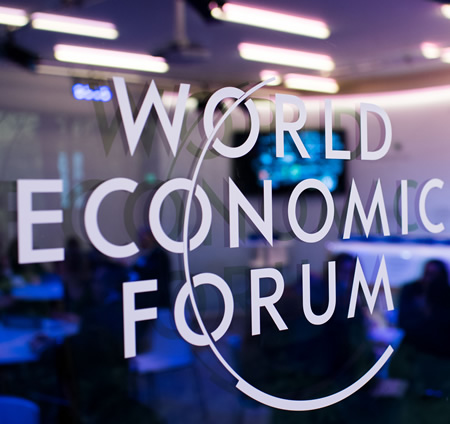
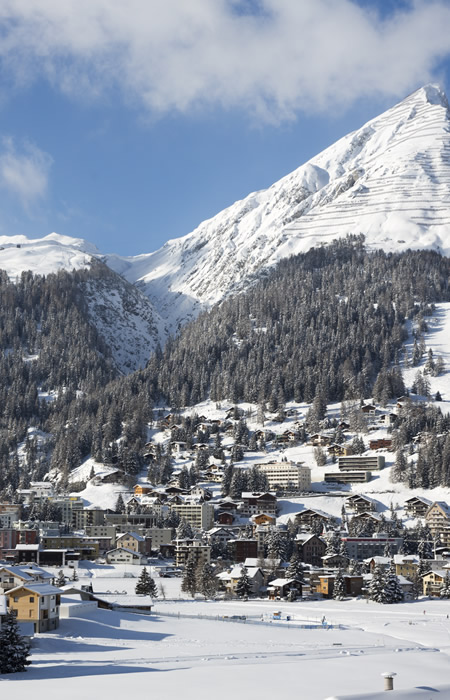
Photos: World Economic Forum Annual Meeting 2017, Davos, Switzerland. Images provided by & Copyright © World Economic Forum / Faruk Pinjo / Valeriano Di Domenico.
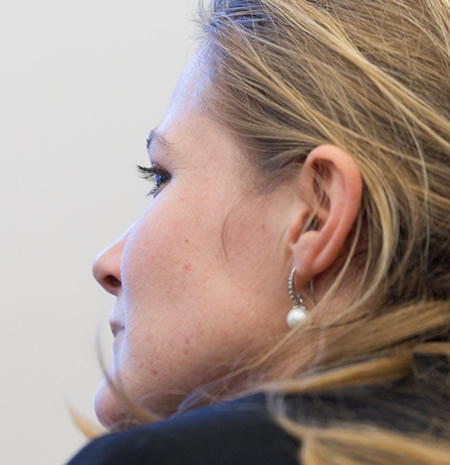
Photo: Interaction during the session: Davos Insights: Strengthening Systems for Global Collaboration, at the Annual Meeting 2017 of the World Economic Forum in Davos, Switzerland, January 20, 2017. Image provided by & copyright © World Economic Forum / Greg Beadle.
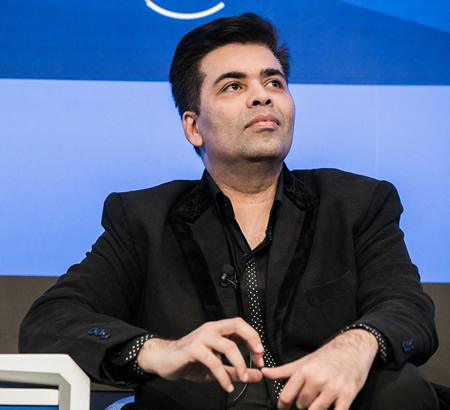
Photo: The New Lead Characters. Karan Johar, Head, Dharma Productions, India, at the Annual Meeting 2017 of the World Economic Forum in Davos, January 17, 2017. Image provided by & copyright © World Economic Forum / Jakob Polacsek.
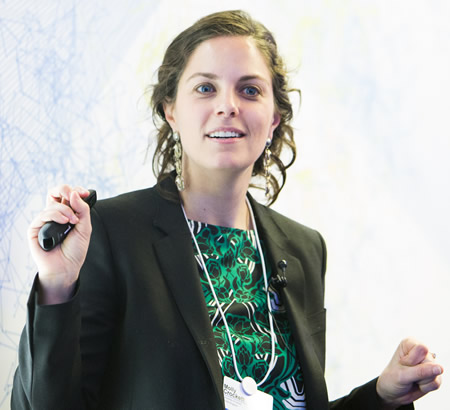
Photo: Ask About: The Psychology of Populism. Molly Crockett, Associate Professor of Experimental Psychology, University of Oxford, United Kingdom, at the Annual Meeting 2017 of the World Economic Forum in Davos, January 17, 2017. Image provided by & copyright © World Economic Forum / Sikarin Thanachaiary.
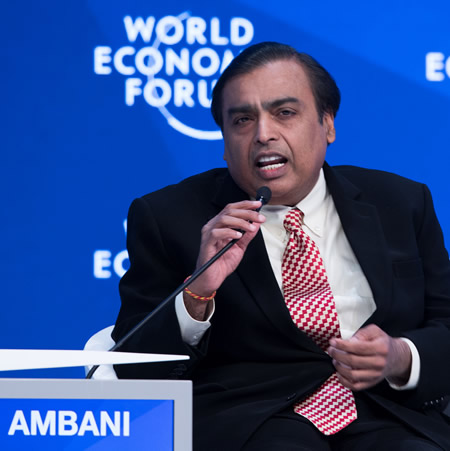
Photo: Preparing for the Fourth Industrial Revolution. Mukesh D. Ambani, Chairman and Managing Director, Reliance Industries, India, “Preparing for the Fourth Industrial Revolution” Session at the World Economic Forum in Davos, January 17, 2017. Image provided by & copyright © World Economic Forum / Valeriano Di Domenico.
Davos-Klosters, Switzerland - January 20, 2017 — The accelerating pace of change driven by emerging technologies threatens to create wider income and opportunity gaps, warned business and technology leaders in a session on preparing for the Fourth Industrial Revolution on the opening day of the World Economic Forum Annual Meeting. “We are at a point where it is possible that technological development can accelerate and increase digital refugees,” warned Marc R. Benioff, Chairman and Chief Executive Officer of Salesforce in the US. Added Vishal Sikka, Chief Executive Officer of Infosys in the US: “We have to put in an extra effort so that we don’t create a bigger society of have-nots. That means a deep commitment to education and to addressing the displacements.”
The key to preparing for the Fourth Industrial Revolution lies in the technologies themselves, argued Mukesh D. Ambani, Chairman and Managing Director of Reliance Industries in India. “These technologies really are all-inclusive and will benefit all. In a sense they are great equalizers.” The rapid growth of e-commerce and digital cash in India is an example, he observed. “And the fastest way to transmit education in a big country like India is through technology.” Making these technologies inclusive will require designing them so that they benefit everybody and not just a few, Sikka said. “That requires empathy. I’ve always wondered why every company isn’t a technology company.”
Focusing on education and promoting innovation are not new solutions to the challenges of inequality and marginalization. “Education and entrepreneurship are the answers,” Sikka stressed. “We just haven’t been doing enough of it.” And what is required are fresh approaches or new models shaped through debate and collaboration among all stakeholders, Benioff said. He proposed that CEOs each adopt a public school. For initiatives to be effective will require building trust and articulating a vision, explained Mary Barra, Chairman and Chief Executive Officer of the General Motors Company in the US. “You need to be incredibly transparent for people to have trust.”
To prepare for the disruptions of the Fourth Industrial Revolution, leaders will require radar to pick up on displacement and discontent and a compass to set the values and vision needed to succeed, Ngaire Woods, Dean of the Blavatnik School of Government at the University of Oxford in the UK, told participants. To weather the challenges will require more collaboration among countries, said Shu Yinbiao, Chairman of the State Grid Corporation of China. “Globalization is inevitable and is good for the development of the global economy. We will need more international cooperation.”
The 47th World Economic Forum Annual Meeting is taking place on 17-20 January in Davos-Klosters, Switzerland, under the theme Responsive and Responsible Leadership. More than 3,000 participants from nearly 100 countries are participating in over 400 sessions.
The Co-Chairs taking a principal role in shaping the discussion at the meeting are:
- Frans van Houten, President and Chief Executive Officer, Royal Philips, Netherlands.
- Brian Moynihan, Chairman of the Board and Chief Executive Officer, Bank of America Corporation, USA.
- Sharmeen Obaid-Chinoy, Documentary Filmmaker, SOC Films, Pakistan.
- Helle Thorning-Schmidt, Chief Executive Officer, Save the Children International, United Kingdom.
- Meg Whitman, President and Chief Executive Officer, Hewlett Packard Enterprise, USA.
|GlobalGiants.Com|







Edited & Posted by Editor | 1:33 PM | Link to this Post
January 10, 2017
UN Security Council Debates Conflict Prevention, Sustaining Peace
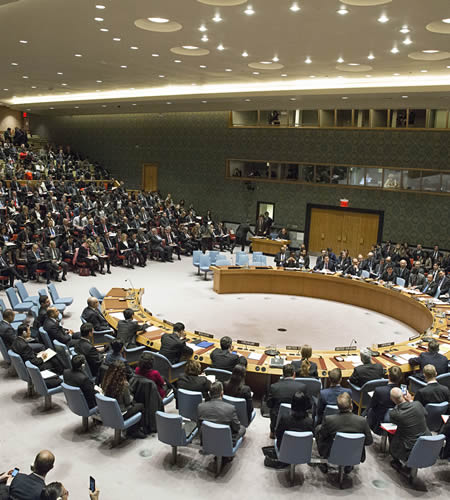
Photo: A view of the Security Council ministerial-level open debate on conflict prevention and sustaining peace. 10 January 2017. United Nations, New York. UN Photo/Evan Schneider.
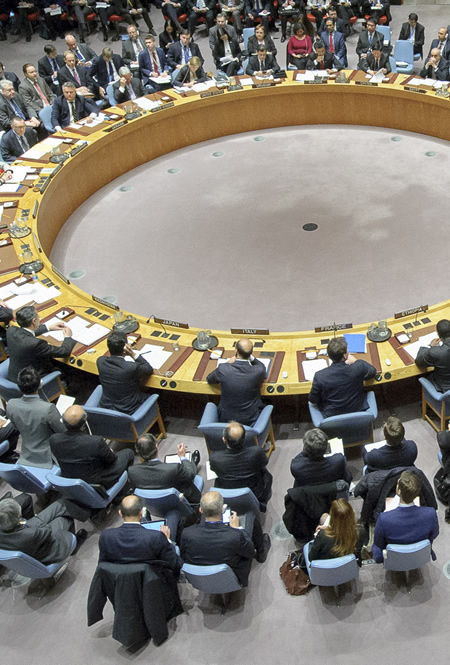
Photo: A view of the UN Security Council ministerial-level open debate on conflict prevention and sustaining peace. 10 January 2017. United Nations, New York. UN Photo/Manuel Elias.
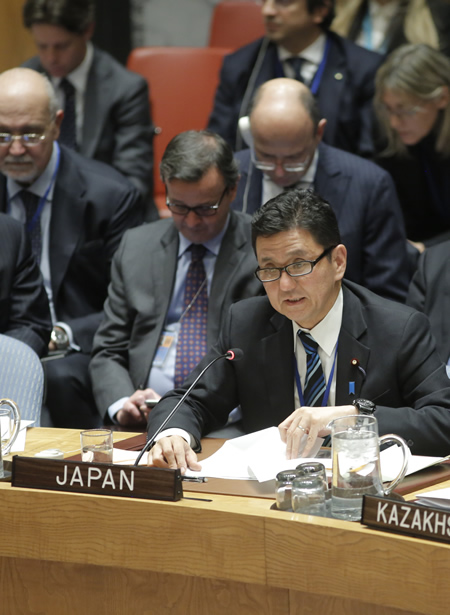
Photo: Nobuo Kishi, State Minister for Foreign Affairs of Japan, addresses the UN Security Council ministerial-level open debate on conflict prevention and sustaining peace. 10 January 2017. United Nations, New York. UN Photo/Evan Schneider.
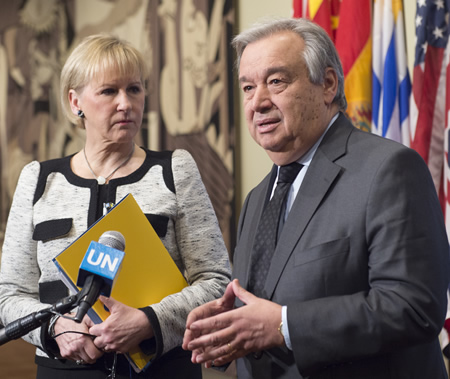
Photo: UN Secretary-General Antonio Guterres (right) addresses journalists with Margot Wallstrom, Minister for Foreign Affairs of Sweden and President of the Security Council for January, on the Council’s open debate on conflict prevention and sustaining peace. 10 January 2017. United Nations, New York. UN Photo/Eskinder Debebe.
|GlobalGiants.Com|

“If they want peace, nations should avoid the pin-pricks that precede cannon shots.”
— Napoleon Bonaparte.

“You do not get peace by shouting: Peace. Peace is a meaningless word; what we need is a glorious peace.”
—Napoleon Bonaparte.







Edited & Posted by Editor | 11:42 PM | Link to this Post
December 22, 2016
Airbus Shortlists 50 University Teams for Fifth Fly Your Ideas Global Student Competition
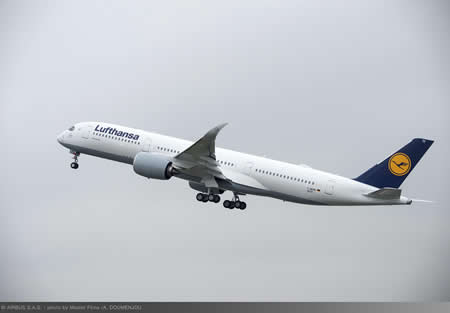
Photo: The first A350-900 for Lufthansa, which performed its maiden flight in November 2016, is part of a 25-aircraft order placed by the German flag carrier. Image provided by & copyright © AIRBUS.
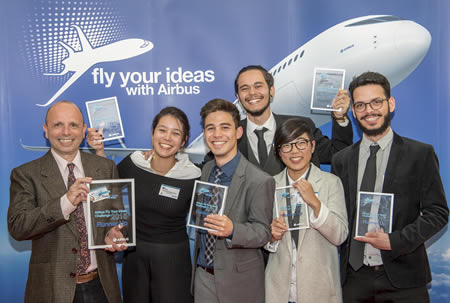
Photo: Team Retrolley from University of Sao Paulo, Brazil, Runners-up of Airbus Fly Your Ideas 2015. From left: Fausto Mascia, Academic mentor University of Sao Paulo, Denise Ikuno, Lucas Otsuka, Tadeu Omae, Maki Shintate, Lucas Neumann. Image provided by & copyright © AIRBUS.
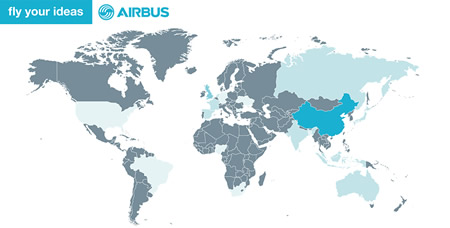
TOULOUSE, France, Dec. 20, 2016 — A record 5,499 students from around the world registered to participate in the fifth edition of Airbus’ Fly Your Ideas, the global student challenge organised in partnership with UNESCO.
A group of 60 Airbus experts and innovators assessed the ideas submitted by 356 teams from 89 countries. The rigorous evaluation process took place at four different Airbus locations in France, Germany, Spain and the UK, with 50 student teams selected to reach Round Two of the competition, starting in January 2017.
The competition is led by teams registered in the Asia-Pacific region. The 50 teams comprise 202 students representing 38 different nationalities. With 52% of teams mixing male and female students, two thirds of all teams are diverse in some way, for example with members coming from different countries or studying different subjects.
Innovative ideas from the 50 chosen teams include robotic luggage trolleys, passenger seats which can be boarded outside the aircraft, new solutions for energy harvesting and virtual reality applications.
“Fly Your Ideas is unique and we are proud of the company-wide engagement of Airbus employees who support the competition, either as assessors, mentors or experts”, says Charles Champion, Airbus Executive Vice President Engineering. “We are offering students the rare opportunity to interact directly with senior specialists from across the business. In turn, these experts will benefit from their direct interaction with talents from across the globe, all sharing the same passion for one of the world’s most exciting industries.”
Each of the teams has 100 days to refine and develop their ideas. The top five teams to make it through to Round Three will spend a week at the “ProtoSpace” based at the Airbus HQ in Toulouse to prototype, test and visualise their ideas using state-of-the art equipment with personalised guidance from Airbus. The winning team will receive a €30,000 prize and the runner up team will receive €15,000 at a live prize giving event in May 2017.
Key figures Fly Your Ideas 2017:
• Number of ideas submitted: 356
- Number of countries involved: 89
- Number of universities involved: 348
- Top 5 countries: India - 64 teams, China & HK - 44 teams, Spain - 29 teams, Indonesia - 24 teams, United Kingdom - 20 teams
• Number of ideas chosen: 50
- Number of countries involved: 41
- Number of universities involved: 57
- Top 5 countries: China & HK - 9 teams, Singapore - 5 teams, United Kingdon - 4 teams, Australia - 3 teams, Indonesia - 3 teams
|GlobalGiants.Com|
#Airbus and #UNESCO: The Fly Your Ideas Partnership. #HigherEd #Universities @Airbus @UNESCO https://t.co/jRaoi9awqu
— GlobalGiants.Com (@GlobalGiants) December 23, 2016
Watch as the #A350-1000 performs its maiden flight - Thanks to all who joined us yesterday for this industry milestone! #A350FF pic.twitter.com/nQZrxqRT6l
— Airbus (@Airbus) November 25, 2016







Edited & Posted by Editor | 4:33 AM | Link to this Post
December 16, 2016
India Minister updates Parliament on Universities in the Country
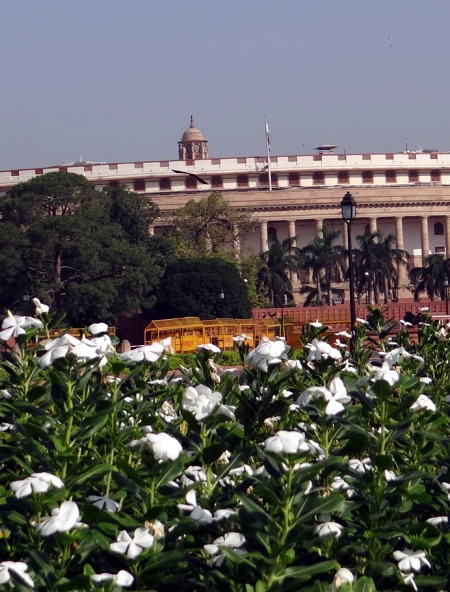
Photo: A Section of Parliament House, New Delhi. Image Credit: Ankur Gallery.
New Delhi, India - December 15, 2016 — India Minister of State for Human Resource Development, Dr. Mahendra Nath Pandey, today, in separate written statements, gave the following information to Rajya Sabha (upper house) about universities in the country.
• “As per All India Survey on Higher Education 2015-16, the number of universities in the country is 799, and out of them 386 Universities came into existence since 2001. The number of students and teachers in the institutions of higher education in the country during academic year 2015-16 are 3.46 Crore (one crore= ten million) and 15.19 Lakh (one lakh= one hundred thousand) respectively.”
• “The University Grants Commission (UGC),” the Minister explained, “is responsible for promotion and co-ordination of University Education, determination and maintenance of standards of teaching, examination, and research in Universities. To ensure adequate quality teaching faculties in Universities/Colleges, the UGC has notified rules and procedures containing Academic Performance Indicators (APIs). API scores are mandatory qualifying benchmarks for Career Advancement Scheme and for direct recruitment of teachers and other academic staff in Universities and Colleges.”
• The Minister gave the following information on Central Universities.
“Central Universities,” the Minister stated “are statutory autonomous bodies which are established under their respective Acts of Parliament. Subordinate legislation in respect of Central Universities includes Statutes, Ordinances and Regulations framed under the respective Acts by the Universities from time to time.”
“Along with the Act, the First Statutes of the Central Universities are passed by the Parliament. The Central Universities can amend, add or repeal any Statute with the approval of the Visitor. Ordinances and Regulations are also made by the Universities which should be consistent with the Act and Statutes of the university concerned,” the Minister explained.
The Minister said that at present there are 41 Central Universities in the country.
“In a meeting held with the Vice Chancellors of Central Universities,” the Minister elaborated, “the issues relating to improvement of quality of education, promoting research and innovation, faculty development, collaboration with the industry and research laboratories, effective use of technology in teaching learning process, and mandatory accreditation were discussed at length.”
The Minister elucidated that the University Grants Commission (UGC) has introduced the following schemes/regulations/guidelines/programmes for the improvement of quality and standards in the Central Universities:
- Mandatory accreditation of Universities with National Assessment and Accreditation Council (NAAC).
- Periodic updation of curriculum.
- Prescription of minimum qualification for appointment of teachers and other academic staff.
- Establishment of Internal Quality Assurance Cell.
- Introduction of Semester System.
- Introduction of choice-based credit system.
- Introduction of Faculty Recharge programme to augment research and teaching resources.
- Liberal financial support under the schemes of University with Potential for Excellence.
• Cashless Society - Digital Financial Literacy Campaign
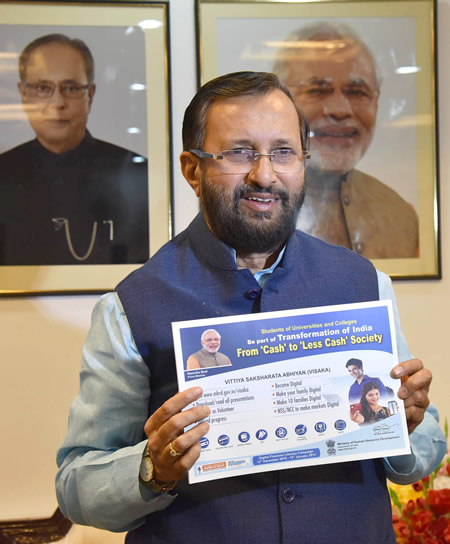
Photo: The Union Minister for Human Resource Development of India, Mr. Prakash Javadekar, launching the Digital Financial Literacy Campaign, called Vittiya Saksharta Abhiyan - VISAKA, at a press conference, in New Delhi, on December 15, 2016. Image provided by the Press Information Bureau, Government of India.
Meanwhile, the Union Minister for Human Resource Development of India, Mr. Prakash Javadekar, today launched Digital Financial Literacy Campaign at a Press Conference in New Delhi. Mr. Javadekar said that about 25,00,000 students of higher educational institutions are expected to volunteer to be associated with the campaign.
Mentioning this campaign as biggest digital transformation of country after Independence, Minister said that Government officers, Bankers and administrators will be roped in to impart training to students. Students, in turn, will educate their family members and other families in their neighbourhood, motivating them to go in for digital payment.
|GlobalGiants.Com|
Students of Univs & Colleges be part of #TransformingIndia from 'Cash' to 'Less Cash'.Visit https://t.co/R0j8Pz5Grb to enroll as volunteers. pic.twitter.com/UVSS1oqUHa
— Prakash Javadekar (@PrakashJavdekar) December 15, 2016
@PrakashJavdekar @PIB_India @PMOIndia @HRDMinistry
— GlobalGiants.Com (@GlobalGiants) December 17, 2016
Thank you for your Tweet, Sir. Find it embedded here: https://t.co/nh7iPn48zg







Edited & Posted by Editor | 7:52 AM | Link to this Post
December 5, 2016
Circular Economy Principles could help India realise $624bn
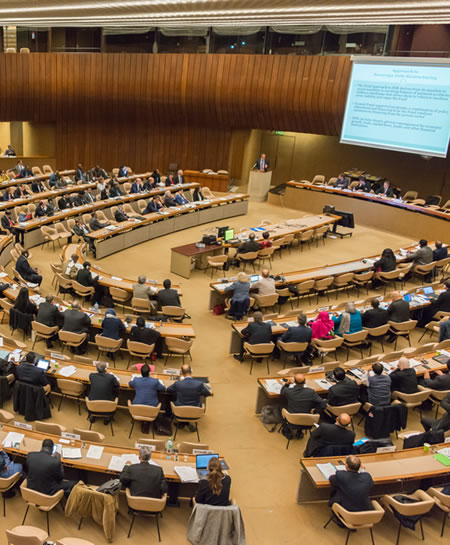
Photo: UNCTAD 10th Debt Management Conference. Over 350 participants from over 100 countries, regional institutions and from the civil society participated in the 10th UNCTAD Debt Management Conference. Image provided by & copyright © UNCTAD.
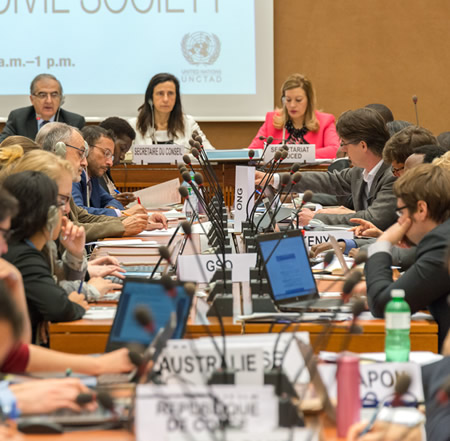
Photo: UNCTAD 14 - 1st hearing with civil society. The hearing with civil society, held on 6 April 2016, provided a platform for organizations to contribute to discussions on what UNCTAD’s work priorities should be for the next four years. Image provided by & copyright © UNCTAD.
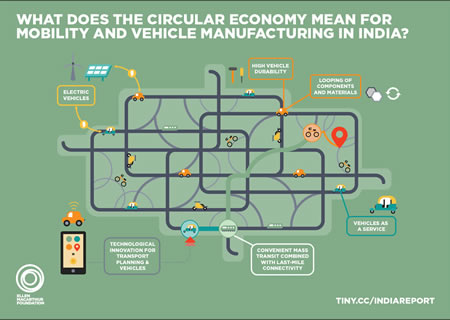
Geneva, Switzerland — 5 December 2016 - India could save $624 billion a year by 2050 if it adopts circular economy principles rather than following a conventional but more wasteful development path, according to a new report on India produced by the Ellen MacArthur Foundation in association with UNCTAD.
The Ellen MacArthur Foundation, an economic research and innovation think tank, promotes the concept of a “circular economy”, which is restorative and regenerative by design, and which aims to keep products, components and materials at their highest utility and value at all times.
“Today’s linear ‘take, make, dispose’ economic model which relies on large quantities of cheap, easily accessible materials and energy, is increasingly challenged in the long term. A circular economy is an attractive and viable alternative that businesses are already exploring,” the Ellen MacArthur Foundation said.
Pilot projects have already shown these practices contributing towards cost savings of hundreds of millions dollars per year.
“Increasing circularity can help unlock efficiencies, opening up urgent investment opportunities and delivering environmental, economic and social gains,” Guillermo Valles, Director for International Trade in Goods, Services and Commodities, UNCTAD said. “Lessons from this work in India serve as an important example for other developing countries seeking to meet both the Sustainable Development Goals (SDGs) and commitments in the Paris Agreement.”
India’s ambassador to the United Nations in Geneva, Ajit Kumar, said: “India is earnestly working towards finding ways to improve the living standards of its citizens, compatible with its resources. Sectors such as mobility, agriculture and construction will play a crucial role in the future growth of India. The suggestions contained in the report are therefore, noteworthy and timely.”
Dame Ellen MacArthur, founder of the Ellen MacArthur Foundation, said: “This report builds on the Foundation’s previous analysis of the circular economy opportunity for Europe, by exploring for the first time the potential of applying the circular framework in a fast-growing market context. With its existing circular mindset and strong digital backbone, India can reap significant economic and societal benefits, embarking on a positive development path as it focuses on regenerative practices.”
The report says that better product design and innovative business models could generate cost savings and increase profits for businesses, in parallel with the shift to digitally enabled platforms for asset sharing, such as Zipcar, in which procuring services replaces owning goods.
A shift from selling cars to providing vehicles as a service could create new revenue streams for India’s car industry. Only about 2% of the Indian population currently owns a car, but the demand for mobility is increasing, the report says.
Using data from UNCTAD, the report estimates that India could save costs amounting 11% of its current GDP in 2030 and 30% of GDP in 2050 if proven circular approaches were adopted by the public and private sectors. Greenhouse gas emissions could be cut by 44%.
The report was launched in New Delhi, India, on 5 December, and an international briefing will be held in Geneva, Switzerland, on 12 December.
|GlobalGiants.Com|
.@UNCTAD ambassador Guillermo Valles starting the briefing on our #circulareconomy in #India report @circulareconomy @jossbleriot pic.twitter.com/UU0TapXv0X
— Sven Herrmann (@svenherrmann_) December 12, 2016
In Geneva for a briefing on our latest research - what would a #circulareconomy mean for #India? @UNCTAD https://t.co/wP1POVn8T4 pic.twitter.com/E6tDRzvo0w
— Ellen MacArthur Fdn. (@circulareconomy) December 12, 2016
@circulareconomy @UNCTAD
— GlobalGiants.Com (@GlobalGiants) December 12, 2016
Thanks for your tweet on #circulareconomy in #India. https://t.co/n1C7XL9Cc9







Edited & Posted by Editor | 2:19 PM | Link to this Post
December 2, 2016
China and India Lead in the Times Higher Education BRICS & Emerging Economies University Rankings 2017
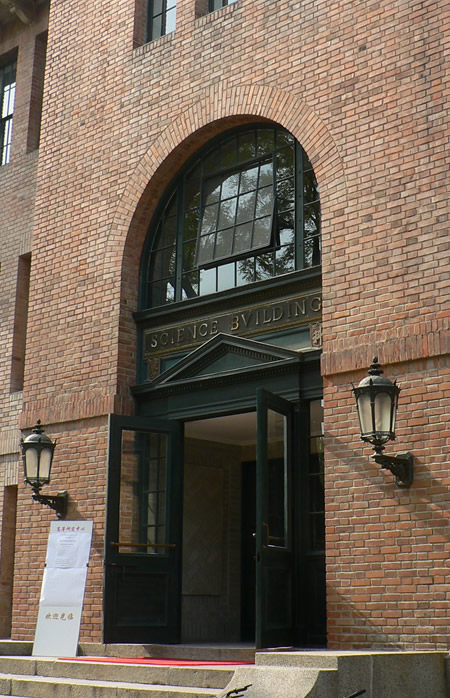
Photo: Entrance to the Science Building, Tsinghua University, Beijing, China. Image Credit: Milan Tvrdy.
London — India has increased its share of the top universities in the Times Higher Education BRICS & Emerging Economies University Rankings 2017, but China still has the highest density of leading institutions in the developing world.
The Indian Institute of Science, Bangalore, breaks into the top 15 for the first time this year, in 14th place, thanks to an improved teaching environment and greater research influence.
Panjab University, Chandigarh, which had topped in India at No. 13 in 2014, and had later slipped to No. 39 in 2015 and to No. 121 in 2016, has, however, further slipped and is now placed at No. 135.
Meanwhile, Indian Institute of Technology Bombay has reached its highest position after climbing three places to 26th, boosted by improved scores across all the five pillars underlying the methodology.
Overall, the country has 27 universities in the top 300 ranking, 19 of which make the top 200 (up from 16 last year), making it the second most-represented nation in the table.
Anurag Kumar, director of the Indian Institute of Science, said that increased government science funding in recent years has enabled the university to enhance grants for new hires, invest in state-of-the-art infrastructure and encourage interdisciplinary research. The institution is working hard to attract more scientists from other countries, he added.
“This growing talent pool augurs well for the country,” he said. “The government is doing its part by enhancing its education and research budget across the board.”
However, Richard Everitt, director of education at British Council India, warns that “reform is slow in India”, and although the country has one of the biggest higher education systems in the world and “some good institutions”, it still “doesn’t perform well on a global platform”.
Despite India’s gains, however, China still dominates the list, taking 52 - or more than one in six - places in the top 300. Six of these make the elite top 10, including Fudan University, which rose 11 places to reach sixth place this year, and Peking and Tsinghua universities, which hold on to the top two spots for the fourth year running.
While the two Asian giants have improved their showing, the performance of the other BRICS nations is waning, largely because of increased competition as a result of expanding the list to rank 300 universities from 41 countries, up from 200 institutions in 35 nations last year.
Brazil no longer has a university in the top 10, as the University of Sao Paulo slips four places to 13th, its lowest ever position, while half of South Africa’s eight universities have fallen.
Russia’s performance is more mixed; while 10 of its 24 universities have dropped places, Lomonosov Moscow State University holds on to third place amid increasing competition from China, and the Moscow Institute of Physics and Technology climbs 81 places to 12th, thanks to an improved performance across teaching, research, knowledge transfer and international outlook.
The THE BRICS & Emerging Economies University Rankings use the same 13 performance indicators as the flagship World University Rankings but are re-calibrated to reflect the development priorities of universities in emerging economies.
BRICS & Emerging Economies University Rankings 2017
TOP 10
- Peking University — China
- Tsinghua University — China
- Lomonosov Moscow State University — Russian Federation
- University of Cape Town — South Africa
- University of Science and Technology of China — China
- Fudan University — China
- Shanghai Jiao Tong University — China
- University of the Witwatersrand — South Africa
- Zhejiang University — China
- National Taiwan University — Taiwan
BRICS & Emerging Economies University Rankings 2017
INDIA
BRICS RANK — UNIVERSITY
- 14 — Indian Institute of Science, Bangalore
- 26 — Indian Institute of Technology, Bombay
- =32 — Indian Institute of Technology, Delhi
- =32 — Indian Institute of Technology, Kanpur
- 35 — Indian Institute of Technology, Madras
- =62 Indian Institute of Technology, Roorkee
- 71 — Indian Institute of Technology, Kharagpur
- 99 — Jadavpur University
- 106 — Indian Institute of Technology, Guwahati
- =107 — Tata Institute of Fundamental Research
- =109 — University of Delhi
- 135 — Panjab University, Chandigarh
- 140 — Tezpur University
- =143 — Savitribai Phule Pune University
- =157 — Aligarh Muslim University
- 179 — University of Calcutta
- =186 — Sri Venkateswara University
- 195 — National Institute of Technology Rourkela
- =196 — Birla Institute of Technology and Science, Pilani
- 201-250 — Acharya Nagarjuna University
- 201-250 — Amrita University
- 201-250 — Andhra University
- 201-250 — Osmania University
- 251-300 — Amity University
- 251-300 — Cochin University of Science and Technology
- 251-300 — Maharaja Sayajirao University of Baroda
- 251-300 — Manipal University
|GlobalGiants.Com|
BRICS & Emerging Economies Rankings 2017: should emerging economies nurture world-class universities? https://t.co/4AsD9wigQQ #thebrics
— TimesHigherEducation (@timeshighered) December 1, 2016
Universities from 41 countries make our fourth annual #THEBRICS ranking. 2017 results out in just TWO HOURS! (30 Nov, 9pm GMT) pic.twitter.com/I7wmY3ftKA
— World Uni Rankings (@THEworldunirank) November 30, 2016







Edited & Posted by Editor | 12:38 PM | Link to this Post



